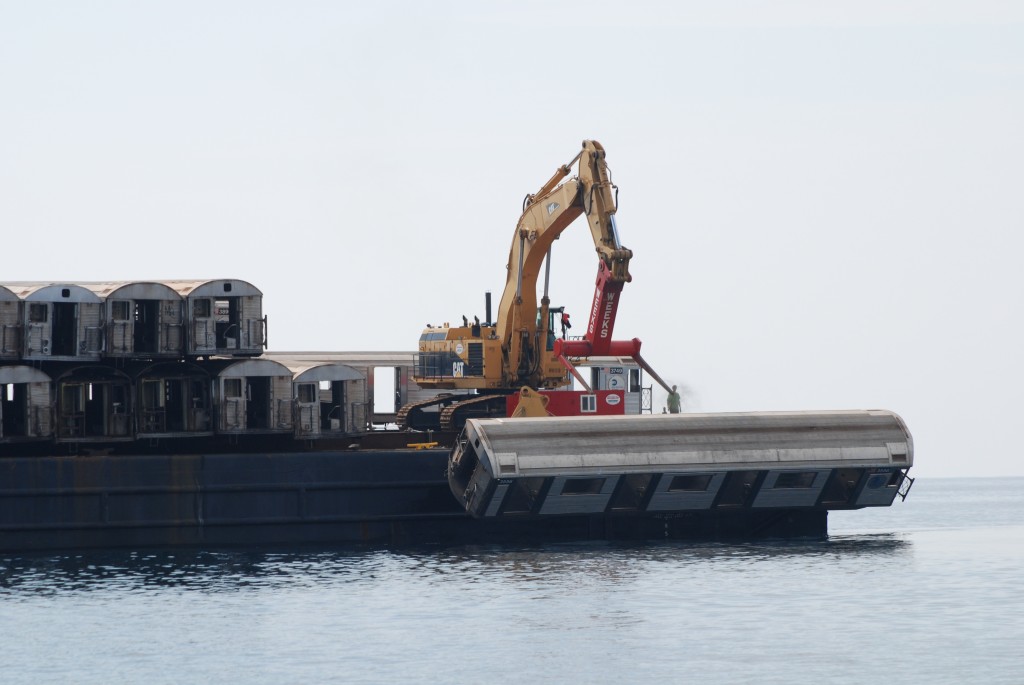How to Inventively Recycle Subway Cars and Other Environmental Hacks
By Barbara Pualani
I don’t surf. Well, correction: I tried to surf. And I failed. Miserably. I also don’t scuba dive. The sensation is too strange; it makes me feel claustrophobic. I reserve those types of adventurous activities for my brave and wonderful colleagues here at EPA.
I do, however, know that many people love these activities, even here in the not-so-tropical destination of New York City. Rockaway Beach, the only legal surfing beach in NYC, and the Rockaway Boardwalk see millions of tourists every year. In order to improve recreation and ocean habitat in this important area of the city, New York State Department of Environmental Conservation recently announced it will be making additions to the important artificial patch reefs.
The Rockaway Reef is a fully artificial reef and is located 1.6 miles south of Rockaway Beach. It was originally permitted for construction in 1965, and the rock, concrete, and steel structures total 413 acres. Over the years, the structures have silted and collapsed. The habitat has degraded and is in need of repair. As part of New York’s Artificial Reef Program, the state will be adding more than 450 concrete-coated steel pipe sections to extend the patch reefs already there.
This project is cool. It’s also good for the environment. Artificial reefs can be constructed by a variety of building materials but are most often made using submerged shipwrecks. They create new habitat for fisheries and give marine life another place to forage, find shelter, and evade predators. The reefs increase fishing opportunities for anglers and promote tourism for both surfers and divers. The benefits are both environmental and economical.
The Rockaway Reef is just one of 11 artificial reef sites in NYS, but the state has helped others along the coast build up their own artificial reefs with, believe it or not, old subway cars. The Metropolitan Transit Authority has recycled over 2500 subway cars over the past decade or so by using them to build artificial reefs all along the eastern seaboard, including in Delaware and in South Carolina.[1] Before they’re dropped to the bottom of the ocean, all doors and windows are removed. The subways cars are cleaned and completely swept of contaminating materials. Because there are so many nooks and crannies available in a subway car, they serve as pretty good spaces for fish habitat. Seeing them now at the bottom of the ocean is quite the trip.
At EPA, we have the mission to protect human health and the environment. It’s great to see projects that not only protect the environment but also allow us to enjoy it and interact positively with it. Sometimes our built environment can integrate well with our natural one, and that’s pretty special.
Like I said, I don’t surf. Diving is not my thing. But I can and do appreciate inventive recycling and habitat restoration. Those are activities I can get behind.
About the author: Barbara Pualani serves as a speechwriter for EPA Region 2. Prior to joining EPA, she served as a Peace Corps Volunteer in the Dominican Republic. She resides in Brooklyn and is a graduate of University of Northern Colorado and Columbia University.
[1] http://www.dailymail.co.uk/sciencetech/article-2918849/Next-stop-REAL-Atlantic-New-York-subway-cars-dumped-sea-create-artificial-reefs-millions-fish.html

